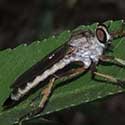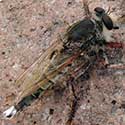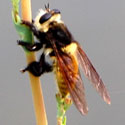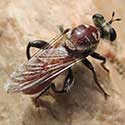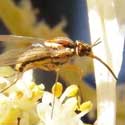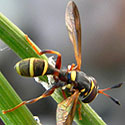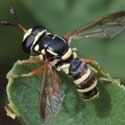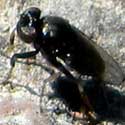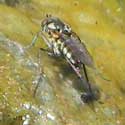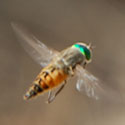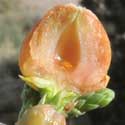Giant Robber Fly
Large, robust insect capable of strong flight and able to take as prey very large insects. More ...
Giant Robber Fly
There are several hard-to-separate giant robber fly species. More ...
Bumblebee Mimic
This audacious fly looks like a bee and then hunts bees to eat. Bold, fuzzy black, yellow and orange. More ...
Ant Robber
This raptorous fly grabs ants off the ground. Large, conspicous compound eyes. More ...
Flower Fly
Many, many kinds of flies visit flowers for nectar and many are important pollinators. More ...
Thick-headed Fly
Looks like a scary wasp but it's harmless. Instead it's a curious fly in disguise. More ...
Ceriana
Harmless fly looks like dangerous wasp. Antennae mounted on a stalk. More ...
Black Fly
Small black flies that usually live near flowing water. Occasionally bite. More ...
Dance Fly
Dance flies perform their footwork on the muddy edges of streams and ponds. Quite small as adults, the worm-like larvae live in clumps of dying algae. More ...
Deer Fly
Robust, fast flying flies the most common about twice the size of a house fly. Tend to bite hikers about the ankles. More ...
Juniper Bud Gall
The small orange larva at the center belongs to a gall midge, a minute fly. The galls are look like juniper berries. More ...
